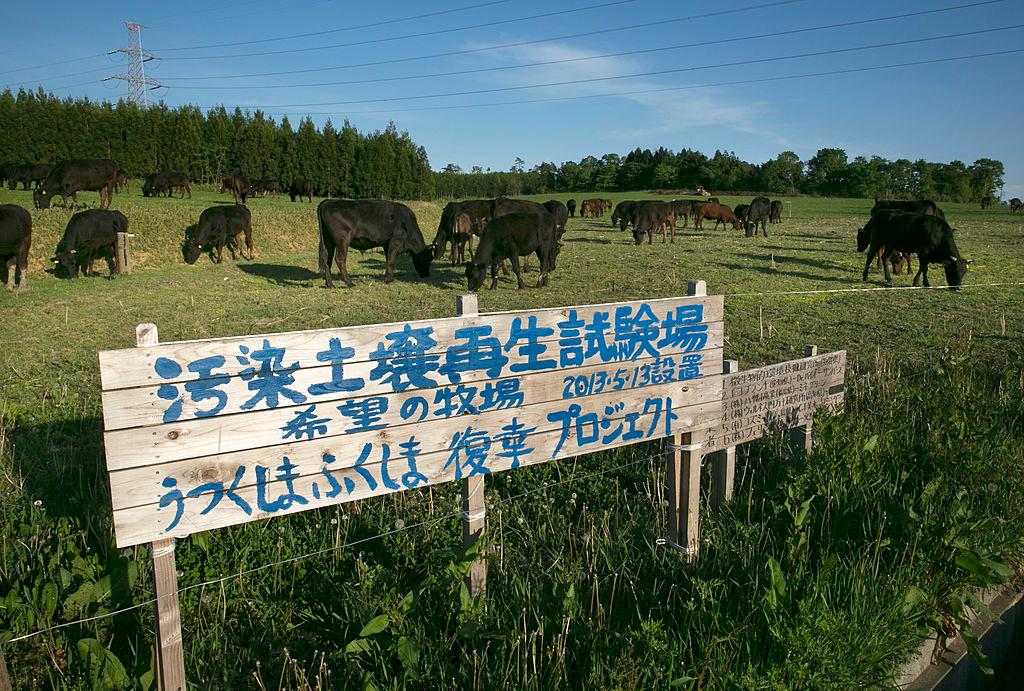

However, some individuals received radiation doses which impose a risk of late effects. These careful studies of Japanese and international institutions have shown that no health effects have been observed until now which can be associated with radiation-induced effects.These high radiation doses in the thyroid may not only induce cancer but also other thyroid diseases in the workers at later years. Also with 13 TEPCO-workers very high radiation doses of 2 to 12 Gy have been estimated in the thyroid, again mainly caused by incorporation of iodine radionuclides. Special attention has to be paid to the thyroid exposure of infants which was low in the average but ranged in few individuals up to 80 mGy. The estimates carry some higher uncertainties therefore, as the decay of radionuclides had progressed during the time after the accident. These measurements only started some weeks after the accident has occurred. The radiation dose cannot be measured directly but has to be calculated through biokinetic models after measuring the 131I-incorporation. This release of iodine has also led to higher and in some individuals extremely high radiation doses after the FDNPS accident.The radio-iodine is specifically taken up in the thyroid by inhalation and ingestion and causes a specific radiation exposure in the thyroid. Some other iodine radionuclides which are also released from damaged nuclear reactors have an even shorter half-life. This radionuclide has a physical half-life of only 8 days. The radiation dose is extremely high in the thyroid after accidents of nuclear power stations due to the release of radionuclides of iodine (I) especially 131I from the nuclear reactor. This risk is very strongly dependent on age with the highest risk in very young children (infants). A high risk for this cancer has been seen with children. The best studied cancer after the Chernobyl accident is thyroid cancer.Thus it will not be possible on the basis of present knowledge to observe an increase of cancer by statistical epidemiological methods. The radiation doses estimated for the general population including very young children (infants) and for the involved workers are low in the average. There is no possibility to distinguish between a cancer caused by ionizing radiation or other reasons. oxidative metabolism, and exogenous, e.g. The cancers are caused by endogenous, e.g.

The incidence and mortality of cancer is relatively high worldwide in all human societies.The development of cancer occurs years and decades after the radiation exposure. The most important late effect one has to be afraid of after radiation exposures in the low dose range is the causation of cancer and this can occur under the assumption of the “linear no threshold” (LNT) model even after low radiation doses.This is again in agreement with earlier experiences in the dose ranges which have been estimated after the FDNPS accident. Careful observations and studies of pregnancies (between Augand July 31, 2011) in seven geographic areas of Fukushima prefecture have not shown a significant increase of developmental anomalies in the born children. The most radiosensitive processes in human life are certainly occurring during the prenatal development in utero.These radiation doses are below the threshold doses for such acute radiation effects. Judging from the world-wide clinical experience with radiation accidents and radiotherapy as well as from experimental data with human tissues, cells as well as with other mammals no acute effects could be expected from the estimated radiation doses. Acute health effects which can be caused by exposures to ionizing radiation have not been observed during the first years after the accident.Looking through the published data with respect to the estimated radiation doses and the surveys of health effects caused by the accident of the Fukushima Daiichi Nuclear Power Stations (FDNPS) I come mostly in agreement with the UNSCEAR-Report of December 2013 to the following conclusions: He has been member and partly chairman of several scientific advisory boards like the German Committee for Radiological Protection (SSK), ICRP and UNSCEAR. He has been leader of interdisciplinary projects with philosophers, lawyers, radiologists, engineers, medical doctors, sociologists and psychologists. This statement is written by a scientist who has worked for more than 50 years in experimental radiobiology (mammalian cells and organisms including humans) with respect to experimental cancer therapy and radiation risk also after prenatal radiation exposure. Christian Streffer, Professor for Medical Radiobiology and Emeritus Member of the Main Commission of ICRP, University Clinics Essen, Germany


 0 kommentar(er)
0 kommentar(er)
